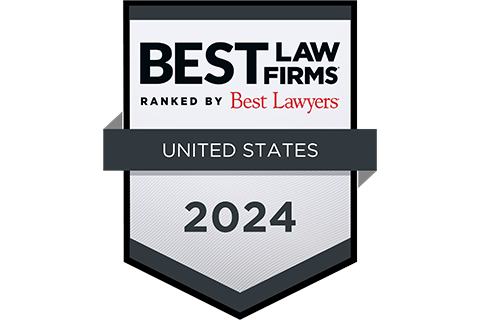Federal Circuit Issues Decision on Section 101 Patent Eligibility of Computer-Implemented Inventions
On May 10, 2013, the Federal Circuit issued its en banc decision in CLS Bank Int’l v. Alice Corp. (Case No. 2011-1301), a closely watched dispute regarding the standard for patent eligibility under 35 U.S.C. § 101. The per curiam opinion affirmed the district court’s holding that the asserted method, computer-readable media, and system claims at issue are not directed to patent eligible subject matter under § 101.
Despite this affirmation, the five separate concurring and dissenting opinions filed by the judges reveal a deep division in the Court on two key issues relating to § 101 patentability: first, whether system claims should be treated differently than method or computer-readable medium claims for the purposes of § 101 patentability, and, second, what the appropriate standard for determining whether a computer-implemented invention is patent eligible should be.
The majority concurring opinion (filed by Judge Lourie, and joined by Judges Dyk, Prost, Reyna, and Wallach) agreed with the per curiam holding that the method, computer-readable media, and system claims at issue all merely claim unpatentable abstract ideas. Judge Lourie opined that the drafting or form of a claim should not control whether it is patent eligible. The opinion further noted that the requirement in the claims for computer implementation does not make the claims patent eligible because “essentially all practical, real-world applications of the abstract idea implicated here would rely, at some level, on basic computer functions . . . the requirement for computer participation in these claims fails to supply an ‘inventive concept’ that represents a nontrivial, nonconventional human contribution or materially narrows the claims relative to the abstract idea they embrace.” This opinion affirmed the reasoning set forth in the recent line of Federal Circuit cases on § 101 patentability (e.g., CyberSource, Bancorp) that the role of the computer in a computer-implemented invention must be defined with some specificity and be central to the claimed invention.
The opinions filed by Judges Rader et al. and Moore (joined by Judges Rader, Linn and O’Malley) disagreed with the per curiam holding that the system claims are patent ineligible. For example, Judge Moore opined that “a system claim’s structural limitations restrict the claimed machine by requiring certain physical components [which] are precisely the sort of ‘inventive concept’ that meaningfully limits the claim.” These opinions also remarked that a patent ineligible “general purpose” computer becomes a patent eligible “special purpose” computer once it is programmed with software, but were silent on the extent of the disclosure regarding software necessary to make such an invention patent eligible.
Judge Newman and Judges Linn and O’Malley filed opinions sharing the majority view that all of the claims of the patent at issue stand or fall together, but opined that the system, method, and media claims at issue are all patent eligible under § 101. Judge Newman further urged the Court to “abandon its failed section 101 ventures into abstraction, preemption, and meaningfulness,” and to instead “return to the statute, and hold that when the subject matter is within the statutory classes in section 101, eligibility is established.”
Notably, the Federal Circuit did not adopt the USPTO’s proposed “inseparability” requirement for computer-implemented inventions, under which a computer-implemented invention that applies an abstract idea would only be patent eligible if the computer is “inseparably” linked to the invention.
Overall, the decision is symptomatic of the Court’s challenge and difficulty in promulgating any bright-line standard for determining when a computer-implemented invention is a patent eligible “special purpose” computer or a patent ineligible “general purpose” computer. This opinion also raises the question of whether the USPTO needs to revise its patent-eligibility test under § 101 since the “inseparability” test was also rejected. For the foreseeable future, it appears that the viability of § 101 challenges will continue to be heavily dependent on the specific court, judge, and patent that is at issue. And, given the deep divide at the Federal Circuit, the outcome of any appeal will likely also depend on the makeup of the panel.

